
Photo: Manor Racing
Piers Hunnisett started off as a promising racing driver, before moving into driver and then team management in Asia. Several of the drivers he looked after have gone on to make motorsport history
Between 1954 and 2001, Asian representation on the Formula 1 grid was limited to Japanese drivers and sponsors, as few countries outside of Europe and the Americas had a middle class that was large enough to support a motorsport culture.
Globalisation and the political transition of several nations, including the opening of government-controlled markets, led to sweeping changes across Asia that led to the first generation of racing drivers being exported to professional seats abroad.
One of the individuals who found themselves in the middle of all this was Piers Hunnisett, who is now Double R Racing’s team manager in Euroformula but first made his name as future touring car icon Jason Plato’s arch karting rival in Britain.
After karting he moved into Formula Ford 1600 in the late 1980s, and raced the rare Talon chassis. At the time, Hunnisett lived on the south coast of England, and Talon’s Newhaven base wasn’t too far away.
“I used to go to the factory every day and every night after working, so I was there at like two o’clock in the morning working on the car, learning how to set the cars up. It taught me everything,” Hunnisett reminisces to Formula Scout.
“Then after that, I moved into FF2000. Again with Talon. We converted from a 1600 to a 2.0 litre, which you could do in those days because it was the same. And then after that I got a Reynard 2.0-litre and ran that myself, and became the Class B champion. And then, Formula Vauxhall Lotus.”
It was in the slicks-and-wings Vauxhall Lotus championship, where Mika Hakkinen had made his name a few years prior, that Hunnisett put himself on the map.
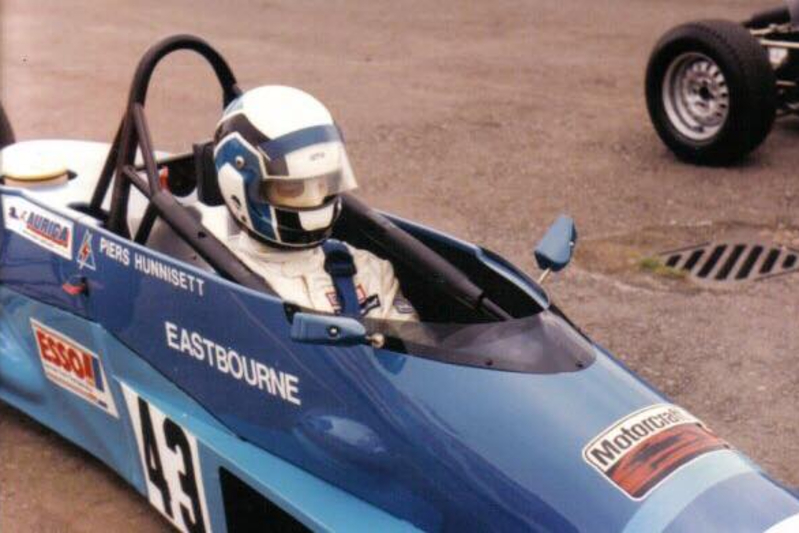
Photo: Heroes of FF1600
“I should have had sponsorship from Camel cigarettes in 1991 but that fell apart at the last minute. But finally I got a chance with the Venom Racing team. They had sponsorship from [window company] Veka. I finished third in the points, that was against Warren Hughes and Kelvin Burt. So it was a good year. We were leading the championship mid-season, but there’s a lot of politics in that championship at the time. You just never knew where you were really [with all the engine trickery].
“But I was lucky then, as David Sears Motorsport picked me up for 1992. I’d known David for a long time as in karting I used to sell racewear. I used to have Stand21 and GPA helmets, so I was his dealer in karting. It was a strange scenario.
“I think Oliver Gavin was supposed to go to David Sears, I was supposed to go to John Village Automotive. But at the last minute, Oliver went to JVA and I went to David. And that was a very successful year, won the championship. I’d say by that time David was my manager, and he was just in the middle of starting the Super Nova team in Formula 3000.”
For more on the slightly crazy story behind the birth of Super Nova, check out this interview with Taki Inoue.
“David tried to get the budget for me to do Formula 3, but it’s ironic because in Vauxhall Lotus one year I won some best driver award so I got a free chassis from Reynard,” Hunnisett continues. “But you needed the money to go with that, which I didn’t have. The year after, I won two engines from Vauxhall, and didn’t have a chassis.”
And this is how Hunisett ended up on his path to Asia.
“At the time, David was building this car for the Asian market: Formula Asia. He said can I go over there for one week and teach some drivers. So I went there for one week. And at that time in the UK, it was very difficult with sponsorship, David couldn’t find anything.
“We should have had a seat with WTS, Willi Weber’s team. It was all lined up, and then Wili called David one day. ‘Sorry Piers, I’ve got this Dutch guy called Jos Verstappen, he’s going to drive instead, he’s got some money from Marlboro’. So that was the end of that one as well.
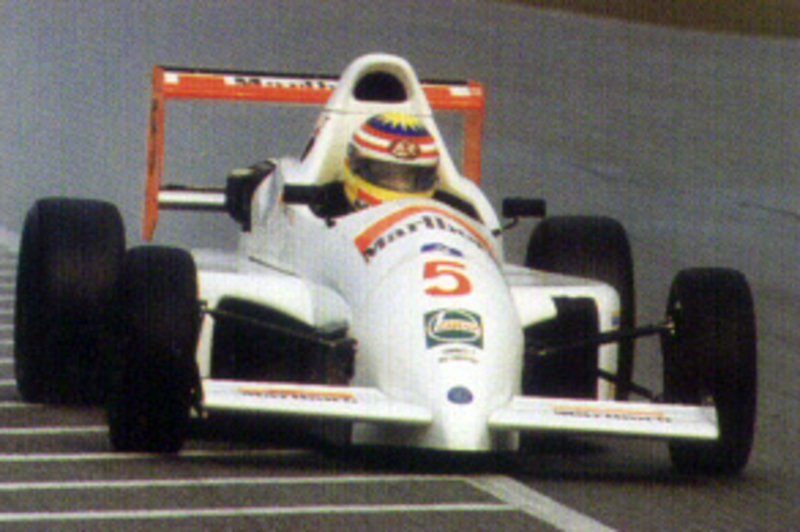
Photo: Ngchikit
“But still, I end up in Asia, and I met Alex Yoong’s father while I was there, and he asked can I run a team for his son. There’s nothing happening in the UK, so I lived in Malaysia one year and ran his son in Formula Asia.
“I knew how to set up a car, knew how to engineer the car, it was good fun managing. Asia was a growing market then. I think we won the first ever single-seater car race in China in Zhuhai with Alex in 1994.
That race was on the streets of the Chinese city and was pretty much the arrival of motorsport in the country, with a permanent circuit opening nearby a year later. Formula Scout can’t find evidence of single-seater racing in China previously, likely making Hunnisett a history maker.
“It was mega there, with all the Chinese fans who had never seen a car like it. It was a real good experience. Then following that, the president of Indonesia’s son – a guy called Tommy Suharto [real name Hutomo Mandala Putra] – he said could I come to Indonesia and run his team. I was still young, so yeah, it’s fun.”
This came as the poverty rate in Indonesia was dropping to a new low, and Suharto’s father wanted to promote motoring in the country. His car-crazy son, who had bought Lamborghini itself and been given responsibility to produce Indonesia’s ‘national car’, was the local face of motoring.
“I went there, ran his team, and during this time, or the year after that we started Team Hunnisett. Me and a partner there. It was sponsored by Electrolux, but at the last minute the sponsor pulled out after giving us the cars. So we ran these cars just on prize money. In Asia, if you won a race you got $10,000 or something. So we were running this car just for the fun of it.
“By this time I’d stopped working with the Suharto family, and that’s when I met Narain Karthikeyan. He was racing there, so we were battling for the championship in FAsia. That led to me managing Narain in his last few years of F3, and in Formula Renault 3.5 with RC Motorsport and again back with Carlin, and obviously took him into Jordan F1 and then Williams test driver. So spent a lot of time in India working for Narain. That was another aspect of Asian life.”
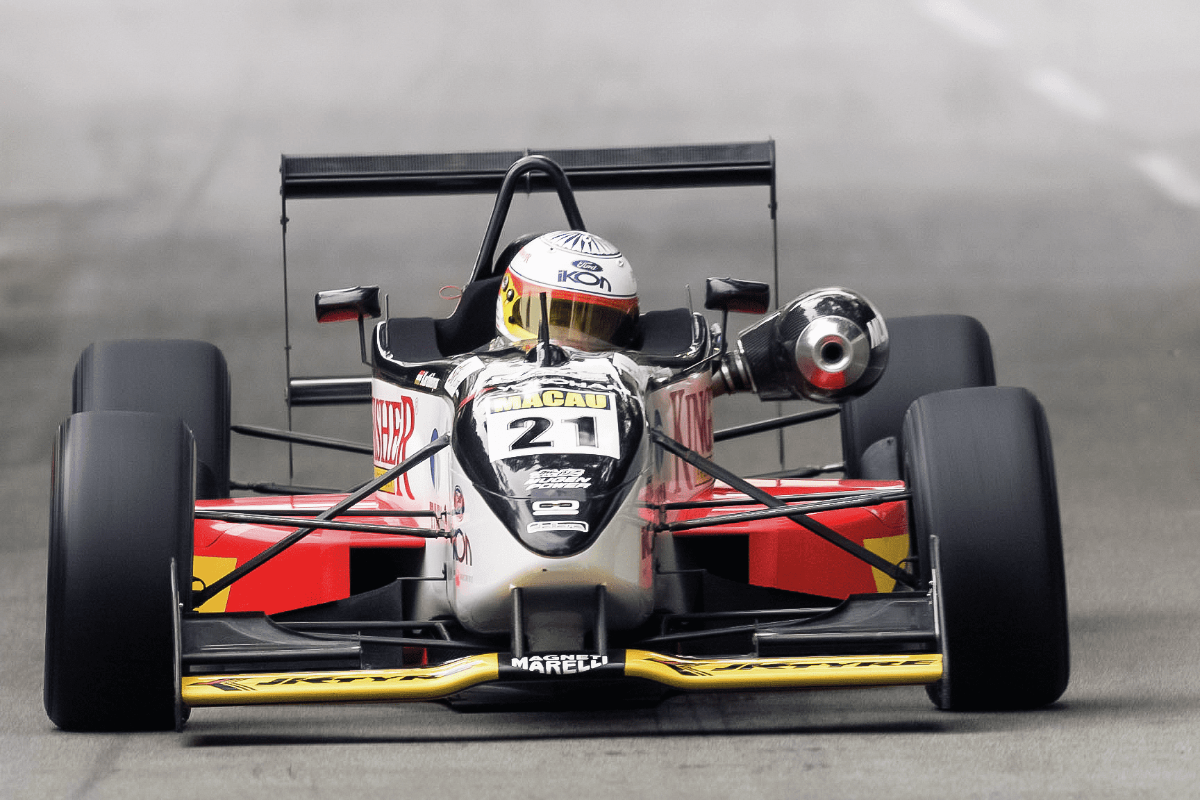
Photo: Macau Grand Prix
While Hunnisett was looking after Karthikeyan’s European racing exploits, Yoong became Malaysia’s first F1 driver in 2001. Then in 2005, after winning the Korean Super Prix, Karthikeyan became the first Indian to reach single-seater racing’s pinnacle.
“He won the Korean Super Prix in 2000. He nearly won Macau, then there was a race in Korea after. He didn’t want to go to the second one so he made up some excuse. I think he crashed in Macau, then I remember him talking to [event organiser] Barry Bland, stating ‘I’ve hurt my hand, I’ve hurt my hand, I can’t go to Korea’. But in Korea there were all these promotions about Narain. Barry was really angry: ‘You’ve got to show me a doctor’s certificate’.
“So the funny thing was Narain got back to India and gave him a doctor’s certificate, but on the certificate is the wrong hand. So rather than his left hand, all of a sudden it’s his right hand that hurt.”
In his rookie F1 season with Jordan in 2005, Karthikeyan finished fourth in the infamous United States Grand Prix – where the majority of the grid returned to the pits after the warm-up lap and left just Ferrari, Jordan and Minardi racing.
“I remember the beer cans being thrown out of the grandstand when all of the cars came in the pits,” Hunnisett recalls. “I say most of the year he had the legs on team-mate Tiago Monteiro, but that race Narain didn’t get it together and we finished P4 whereas Tiago was on the podium. That was a bit of a disappointment, that was.”
Jordan was run by Colin Kolles at the time, and that relationship meant Karthikeyan later landed a Le Mans 24 Hours seat with a Kolles-led team before he fell off the pitwall and dislocated his shoulder before the start of the race.
Hunnisett was also closely associated with the RC team at this time in the mid-2000s, which had honorary F1 junior team status, and he had an Indonesian protege at the outfit in the form of Ananda Mikola. The Asian operation was still going strong under the Eurasia banner, now competing in Formula BMW, and Daniel Ricciardo was the next hot talent on its books.
“We were teaching him everything he knows, we claim,” says Hunnisett. “There were a few other good drivers. Richard Bradley, who now races in prototype sportscars, and people like that.”
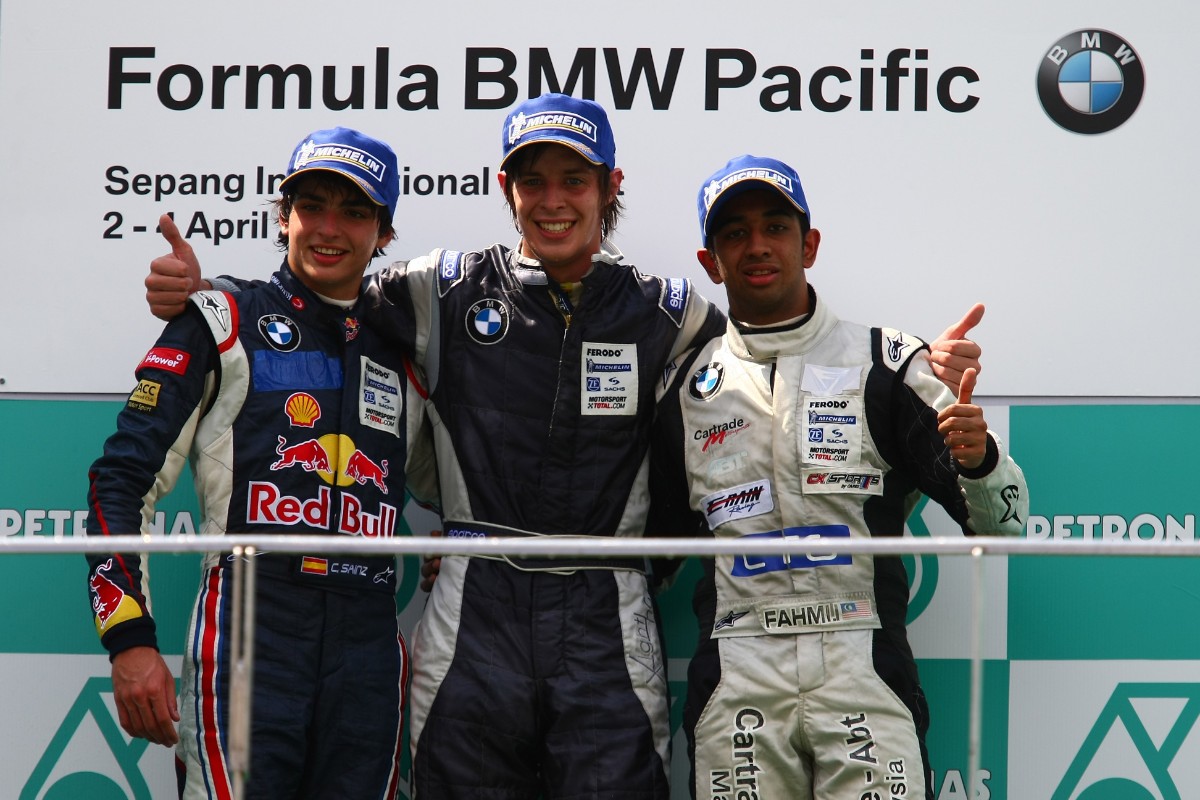
Photo: BMW AG
The debut of Singapore-licensed British karting graduate Bradley was particularly memorable, as he firmly beat Red Bull-backed debutants Daniil Kvyat and Carlos Sainz Jr.
“Always in testing you think they’re there, but then they debut and ‘wow, mega job’. Richard goes up and wins. The same with Daniel. When he was learning, you thought he was good, you didn’t expect him to be as good as he turned out.
“After that we had Antonio Giovinazzi with Sean Gelael in the KFC team. At that time I was managing Antonio and Sean. That was fun. It was interesting times, good times as well. And then, just before that, I started working with Rio Haryanto.”
Haryanto was the next national trailblazer under Hunnisett’s wing to make F1, debuting with Manor Racing in 2016. Having gone different ways with the rather powerful Indonesian presidential family, how did he end up working with the country’s government-backed racer?
“For Rio, you have to go back in time when I was running the president’s son team. I was running Rio’s brother, Roy Haryanto, so I got to know the family. As soon as Rio started to race in Europe, Roy said can I come and help him. So we spent two years in GP3, then the four years in GP2, and then eventually got to Manor F1.”
Unsurprisingly given his lengthy time working with him, Hunnisett thinks Haryanto is an underrated talent, who was well liked within the various iterations of the Manor F1 team from its inception as Virgin Racing in 2010 to when he debuted.
“In his first race in Melbourne, obviously everybody was talking about [Mercedes-AMG junior] Pascal Wehrlein, this wonderkid, and in the contract somebody from Manor decided to put in ‘if Rio is more than 1.5 seconds off Pascal in qualifying for two races, they can drop him for a race’. They asked would I agree to this, I said ‘yeah, no problem’. I had huge confidence in Rio.
“So it was nice we got to Melbourne and outqualified Pascal. I remember straight after qualifying [Mercedes team boss] Toto Wolff’s down the garage asking who this Indonesian driver is. I think in the end it Pascal outqualified us seven times, and Rio outqualified him in five. He held his own.”
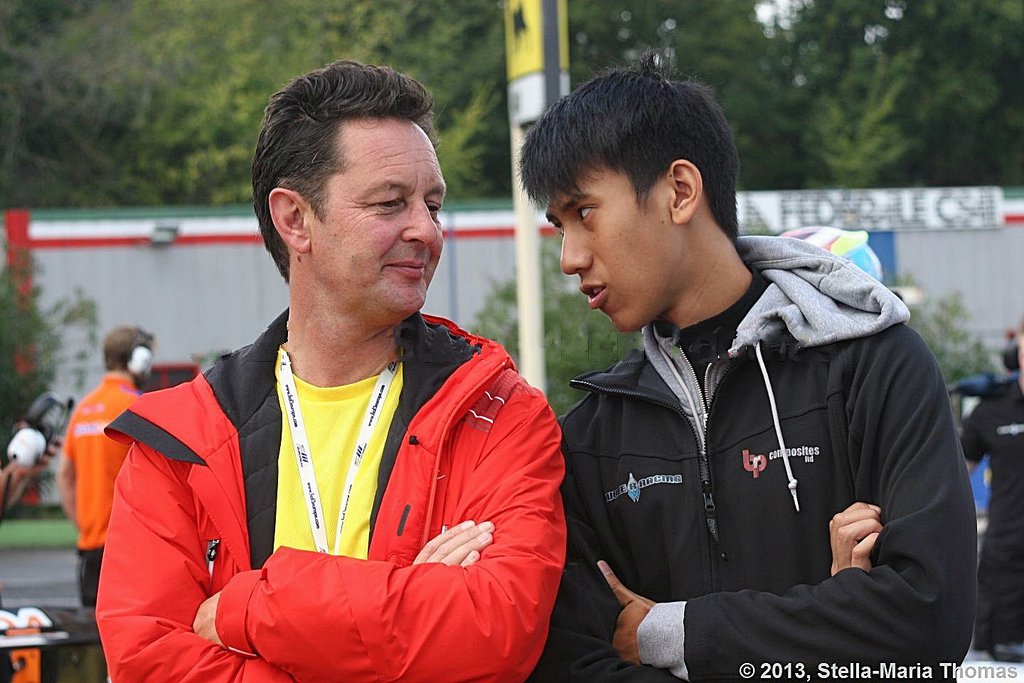 Haryanto lost his drive mid-season, but remained in the team as reserve driver, following a budget shortfall.
Haryanto lost his drive mid-season, but remained in the team as reserve driver, following a budget shortfall.
“We were promised lots from the Indonesian government. And the money didn’t quite turn up. And then you had Esteban Ocon, and obviously Toto’s involved with Ocon, and Renault. Politically, more powerful than we were.
“The government, if they’d had done what they said they were going to do, we’d have been OK. Manor grew to love Rio. Dave Ryan thought he was a star man, and Pat Fry, they really grew to love him. Even [team owner] Steve Fitzpatrick as well.
“Obviously we had the relationship [with the previous owners]. And at the time it was the only place you can go. F1 is strange, you’ve got to get your timing just right. After 2021, it will be very difficult for any drivers to get in I think, because you’ve got this new crop of drivers, and like every driver – once you’re in F1, you fight like hell to stay there.”
Giovinazzi won the GP2 title in 2016, and briefly stepped up to F1 with Sauber before rejoining the team full-time in 2019.
“I was with Rio, and then I stopped working with Sean. Because obviously with Sean and Rio both coming from the same country, there’s some political… it wasn’t easy, you could say. I’d have loved to stay with Antonio, but obviously after working for Rio for seven years, you put all your effort into that one driver, you teach him, you become his second father – because he was over here by himself – so I was like his father. It’s a different kind of management. Some of these management teams, they’ve got 10 drivers and just say ‘go there, go there’. With Rio, and even with Narain, it was every day working for that driver, travelling with them, looking after all their needs. Just one-to-one.
“With Rio, I started to work with him when he was 17. So you see them grow up and mature, it’s unbelievable. Even with Antonio, coming from this little kid.”
Haryanto was “very disillusioned” after losing his F1 seat, and tested in Formula E and sportscars but wasn’t too excited by either. He could have still raced in FE had the series’ planned race in Indonesia’s capital city Jakarta gone ahead last year.

Photo: Sean GP
After another spell living in Indonesia and Singapore, Hunnisett then moved back to the UK and eventually found a job with Double R as it entered Euroformula for the first time in 2019.
“I probably haven’t worked for a team like this – it was usually my own project,” Hunnisett says of his work today.
“Here you’ve got to respect people’s budgets, it’s a little bit different working for somebody. OK, we’re kind of like partners in a way because it’s a very good relationship. It’s interesting. You see things differently from this side of the fence, as such. But I say for myself, having been a driver, a driver manager, and now a team manager, you can see the angle from every side. So you’re not sure which side to argue.
“Because I’ve got my driver’s hat on ‘you should be doing this’, then you’ve got the team ‘you should be doing this’, then the management side is [opposite] to driver and to spend less money. So you see every angle.
“But sometimes it helps to have an understanding of what the management or driver’s thinking, and then I know what the team are thinking. It can help me put it all together.”
While Hunnisett’s main job now is in Europe, although Euroformula could be visiting East Asia this year, the Eurasia team is still competing in Asia. However the impact of COVID-19 and the shift of power in local economies has meant more of the racing has moved to the Middle East – and the Asian Le Mans Series is running there exclusively this year. What’s the picture like in other countries?
“In Thailand it’s growing, China is unbelievable. Every year they seem to be building two new circuits. Obviously it’s all government funded. But to work in China is more difficult. The easiest is where our team is based: Malaysia. The language is English, obviously you go testing at Sepang, which is a very good circuit.

Photo: GP2 Media Service
“But also Thailand is good, Indonesia has its moments. It had a circuit called Sentul, but that’s running down a little bit now. They’re building a MotoGP circuit in Lombok, which is like a street circuit. So if that happens, maybe cars can go there. This is for MotoGP in 2022, I think.”
Motorcycling is still far bigger than car racing in most East Asian countries, mainly because motorcycle ownership far exceeds the number of cars on the road. There’s limited sponsor space on motorcycles, and most firms only benefit from advertising domestically, but MotoGP’s manufacturers are bolstered not only by Indonesian cash but from bike sales and the state oil company Pertamina backed Haryanto’s career as a point of national pride.
Both Karthikeyan and Haryanto also had a helping hand from F1’s old chief executive Bernie Ecclestone, who always had an eye on Asia for money-making opportunities and future driving talents to promote on the world stage.
GP2 Asia, which Ecclestone also owned but was run by the Speedcar organisation, held a round at Sentul in 2008 and Hunnisett was involved in bringing the series to the circuit. He was also a helpful man to have about for teams racing in the Macau Grand Prix, although his Sentul involvement wasn’t greatly appreciated after the GP2 weekend was inflicted by rain and Speedcar’s own NASCAR-style cars ripping up the asphalt to a degree where it caused serious damage to the GP2 cars.
It’s proven troublesome for single-seaters to fully crack the Asian market. Vietnam now has an F1-ready circuit that will likely never be raced on while India and Korea have ex-F1 venues being left to disrepair, but it’s also proven tricky for Asian drivers to get a break in Europe even after success in their home continent. What does Hunnisett think of the current situation?
“At the moment, there’s none really coming through the Asian grassroots. In GP2 you’ve got Guanyu Zhou who’s very good, but he’s already taken by Renault. There will be some more coming through, it’s just bide your time.
 “In Asia, it’s a very interesting place, and motorsport will slowly grow. Obviously you’ve got very wealthy people and you’ve got very poor people. The middle class doesn’t exist so much as it does in Europe. Which is where most of the drivers in karting come from. The love for the sport is there, so it will grow.
“In Asia, it’s a very interesting place, and motorsport will slowly grow. Obviously you’ve got very wealthy people and you’ve got very poor people. The middle class doesn’t exist so much as it does in Europe. Which is where most of the drivers in karting come from. The love for the sport is there, so it will grow.
“The other thing with Asian drivers, it’s not easy for them to live here [in Europe]. The food is different, the climate. You can imagine with Rio, his first team in Europe was Manor Motorsport from Yorkshire. So that was an education straight away. Manor were good, they had him making cups of tea and all-sorts, really made him part of the family. And they all loved him.
“It’s not easy for Asian drivers to come here. But the other problem you have with Asian drivers is their parents. They see motorsport as just a fun thing to do. They say ‘OK, focus on your education first’, but obviously that lasts until you’re 22/23 in Asia. Then you go and play racing cars.
“That’s why it takes longer – there’s only a certain few dedicated parents that push their children.”
And quite a lot of them are linked in some way to governments. But according to Hunnisett, it’s negotiating with the powers of F1 that’s more difficult than working with some of Asia’s most notoriously tricky political individuals of the last 50 years.
“F1 is always difficult. But it’s interesting, you learn so much. You learn not to trust too many people, but it’s very interesting. The politics and the money involved. It’s an eye-opener.
“There’s many stories. It’s been an interesting life, when you work in motorsport it teaches you so much. Especially working in F1 working with big sponsors, you learn about the law. I could become a lawyer now. Sponsorship, marketing, PR, you learn every aspect. It’s a very interesting job.”
The one thing everyone in racing needs to learn is how to win though, and Hunnisett has done a fair bit of that in each of the roles he’s had in motorsport.

Photo: Double R Racing